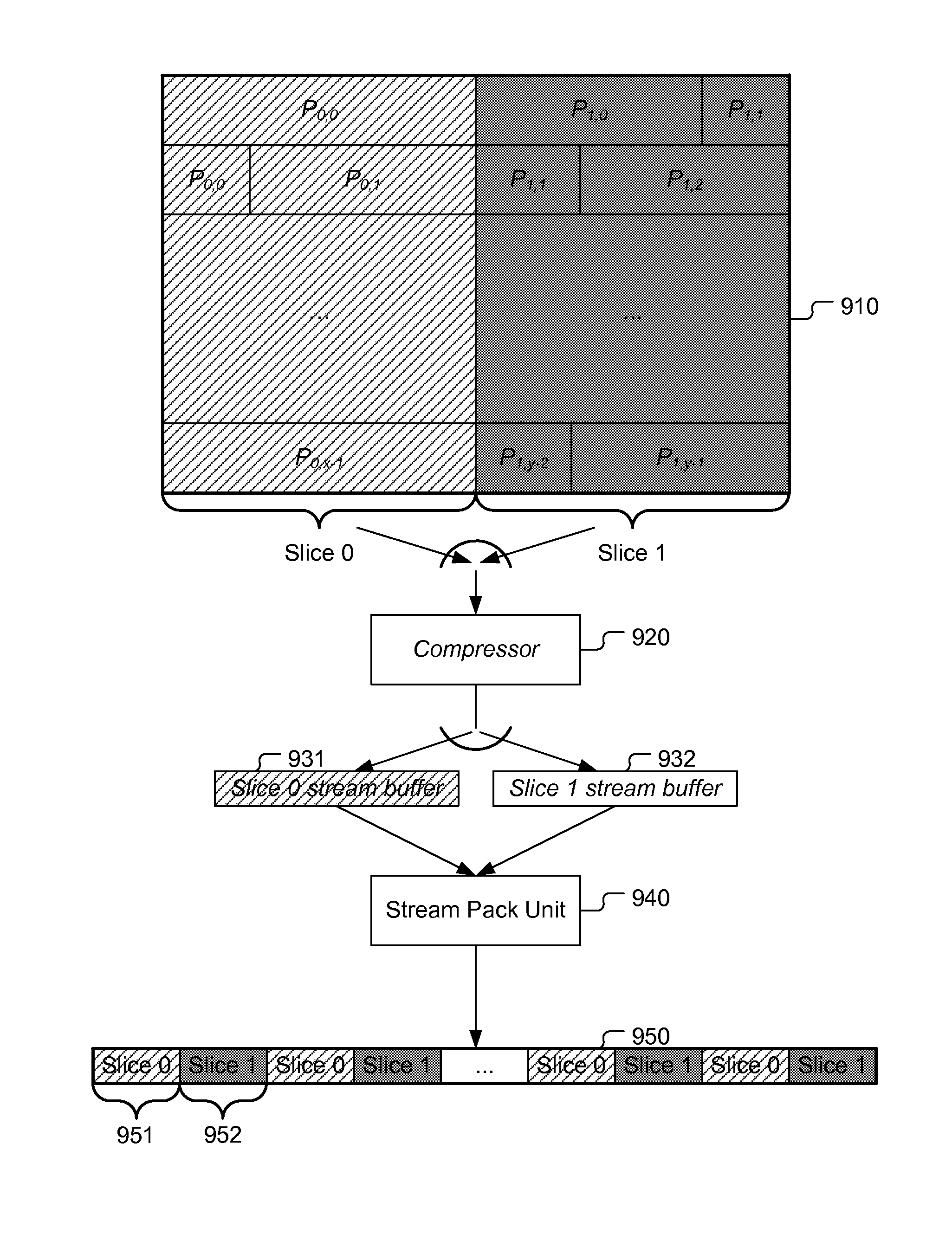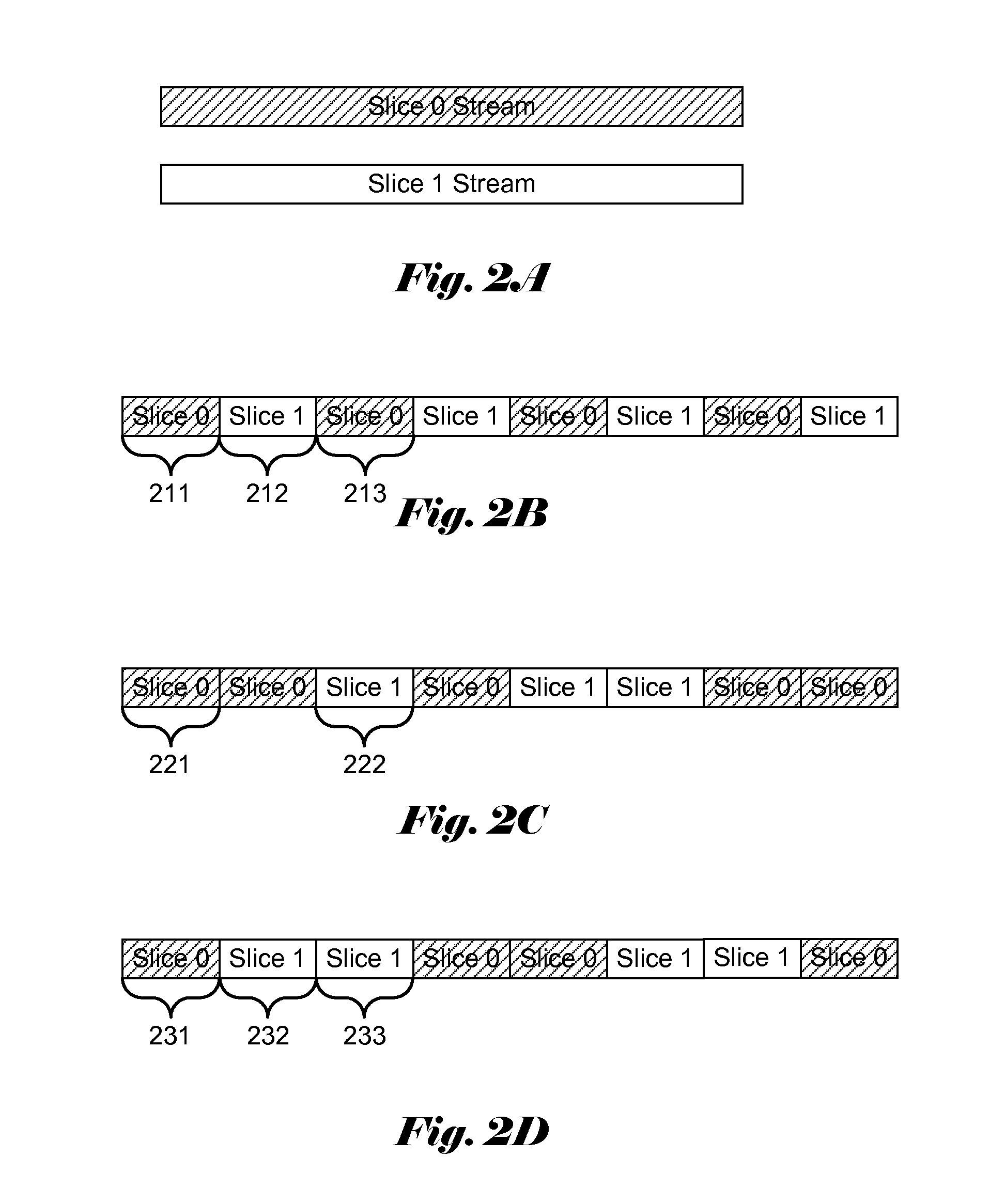Methods of Multiple-Slice Coding for Frame Buffer Compression
a frame buffer and multiple-slice technology, applied in the field of image data processing, can solve the problems of limited throughput, increased transmission bandwidth and power consumption, and inability to display high-definition images
- Summary
- Abstract
- Description
- Claims
- Application Information
AI Technical Summary
Benefits of technology
Problems solved by technology
Method used
Image
Examples
first embodiment
[0050]According to the present invention, each slice is divided into multiple partitions. The encoding of the image frame is based on the partitions. Each partition may be less than, equal to or more than one row of compression blocks in each slice. Two or more slices can be compressed by one encoder module. The de-compression of multiple slices can also be performed by one decoder module.
[0051]FIG. 5A illustrates an exemplary flowchart for encoder incorporating an embodiment of the present invention. After receiving an image frame in step 510, the image frame is divided into multiple slices in step 520. The multiple slices comprise slice 0 and slice 1. In this embodiment, each slice is further divided into multiple partitions for compressing in step 525. Each partition comprises one or more compression blocks. Each compression block is a rectangular pixel group consisting of one or more pixels.
[0052]In step 530, the encoder encoding each partition for each slice to generate a bitst...
second embodiment
[0062]According to the present invention, the coding system encodes one part of one slice and switches to encode another slice based on the information related to the coding status associated with the multiple slices. The image frame is also divided into multiple slices which comprise slice 0 and slice 1. When one encoder module is used to encoding slice 0 and slice 1, the encoding of the slice 0 starts before the encoding of the slice 1. The information may be the pre-defined bitstream size, the amount of data stored in the corresponding stream buffer for the current slice, the fullness status of the corresponding stream buffer, the current encoding position in the image frame, the amount of data in the processing unit, or a combination of the foregoing.
[0063]If the amount of data in the processing unit may be used to determine the switch operation, the compressor may compress a pre-defined amount of data and switch to another slice. For example, the encoder is switch to another sl...
PUM
 Login to View More
Login to View More Abstract
Description
Claims
Application Information
 Login to View More
Login to View More - R&D
- Intellectual Property
- Life Sciences
- Materials
- Tech Scout
- Unparalleled Data Quality
- Higher Quality Content
- 60% Fewer Hallucinations
Browse by: Latest US Patents, China's latest patents, Technical Efficacy Thesaurus, Application Domain, Technology Topic, Popular Technical Reports.
© 2025 PatSnap. All rights reserved.Legal|Privacy policy|Modern Slavery Act Transparency Statement|Sitemap|About US| Contact US: help@patsnap.com



